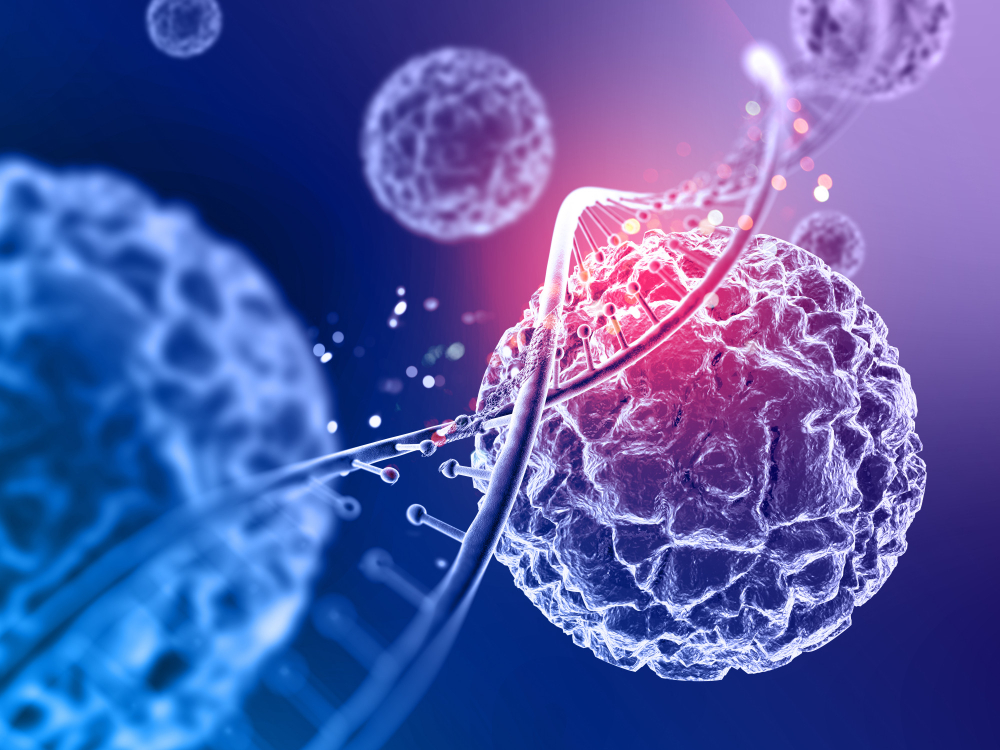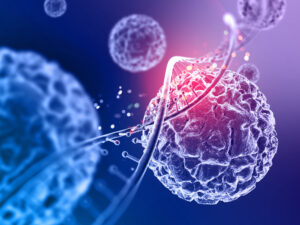
A key component of solving the mysteries of life is genetics, the study of genes and heredity. The building blocks of heredity, genes are what carry the instructions required for all living things to develop and function. In this investigation, we explore the meaning of genes, the concept of genes in biology, and the fascinating realm of mobile genetic elements that mould the genetic terrain.
Gene Definition in Biology
A gene is the fundamental building block of life and the basic unit of heredity. It serves as a repository for genetic information, containing the instructions required for protein synthesis and the regulation of many biological processes. Genes are made up of DNA (deoxyribonucleic acid), a complex molecule that encodes the information needed for an organism’s structure and function.
The central dogma of molecular biology outlines the flow of genetic information: from DNA to RNA to proteins. Genes are transcribed into RNA, which, in turn, serves as a template for protein synthesis. This intricate process governs the development, growth, and functioning of organisms, emphasizing the indispensable role of genes in the continuity of life.
What Are Genes?
 Genes are not only the carriers of genetic information but also the architects of diversity. They determine the traits and characteristics of individuals, dictating everything from eye color to susceptibility to diseases. The human genome, comprising approximately 20,000-25,000 genes, holds the blueprint for human development and functioning.
Genes are not only the carriers of genetic information but also the architects of diversity. They determine the traits and characteristics of individuals, dictating everything from eye color to susceptibility to diseases. The human genome, comprising approximately 20,000-25,000 genes, holds the blueprint for human development and functioning.
For a better knowledge of genes, one must recognize their two main components: the regulatory regions, which control the activity of the gene, and the coding section, which determines the amino acid sequence of a protein. Combining genes from both parents, an organism’s genotype, or genetic makeup, is a powerful indicator of its phenotype, or outward characteristics.
Genotype Definition and Significance
One of the core ideas in genetics is the genotype, which is the genetic makeup of an organism. It includes every gene in a person, including dominant and recessive alleles included. An organism’s observable traits and characteristics are the outcome of the interaction between environmental conditions and genotype.
Understanding the genotype is important in various fields, including medicine, agriculture, and evolutionary biology. In medicine, knowledge of an individual’s genotype can inform personalized treatments and predict susceptibility to certain diseases. In agriculture, the manipulation of genotypes through selective breeding contributes to the development of crops with desirable traits. Evolutionary biologists study changes in genotypes over time to decipher the mechanisms driving the diversity of life.
Mobile Genetic Elements: Unveiling the Dynamic Genome
While genes are the primary players in heredity, the genome is not a static entity. Mobile genetic elements, also known as transposons or jumping genes, are dynamic components that can change their position within a genome. This mobility introduces a layer of complexity to genetic processes and contributes to the evolution of organisms.
Transposons can be categorized into two main types: DNA transposons and retrotransposons. DNA transposons move directly from one location to another within the genome, while retrotransposons transpose via an RNA intermediate. The mobility of these elements can lead to genetic mutations, genomic rearrangements, and the creation of genetic diversity.
Statistics on Mobile Genetic Elements
The prevalence of mobile genetic elements varies across species, and their impact on genomes is substantial. In humans, approximately 45% of the genome is composed of retrotransposons, highlighting their significant presence. Moreover, studies indicate that the activity of transposons is not limited to the early stages of evolution; rather, they continue to influence the genome dynamically.
Understanding the role of mobile genetic elements is essential for comprehending the plasticity and adaptability of genomes. The ability of transposons to alter gene expression, disrupt coding sequences, and create genetic variation underscores their importance in shaping the genetic landscape.
Functional Implications of Mobile Genetic Elements
While transposons were initially considered “junk DNA,” accumulating evidence suggests that they play pivotal roles in genomic regulation and evolution. Transposons can influence gene expression by acting as enhancers or silencers, modulating the activity of neighboring genes. Additionally, their insertion into coding regions may lead to the evolution of new genes or the modification of existing ones.
The impact of mobile genetic elements extends beyond individual organisms. Horizontal gene transfer, facilitated by transposons, enables the exchange of genetic material between different species. This phenomenon plays a crucial role in microbial evolution, contributing to the development of antibiotic resistance and environmental adaptation.
Genetics, with its cornerstone in the study of genes, provides a profound understanding of the mechanisms governing life. The gene definition in biology encompasses the intricate details of genetic information flow, from DNA to RNA to proteins. Genes, as the carriers of heredity, shape the traits and characteristics of living organisms, influencing everything from physical appearance to disease susceptibility.
Mobile genetic elements add a dynamic dimension to the genomic landscape. Transposons, once dismissed as genetic anomalies, are now recognized for their crucial roles in genome evolution and regulation. The prevalence of these elements in the human genome emphasizes their significance in shaping our genetic makeup.
As we continue to unveil the secrets of genetics, the interplay between genes and mobile genetic elements emerges as a fascinating field of study. The integration of genomics, epigenetics, and the study of mobile genetic elements holds the promise of deeper insights into the complexity of life and the mechanisms driving genetic diversity.






